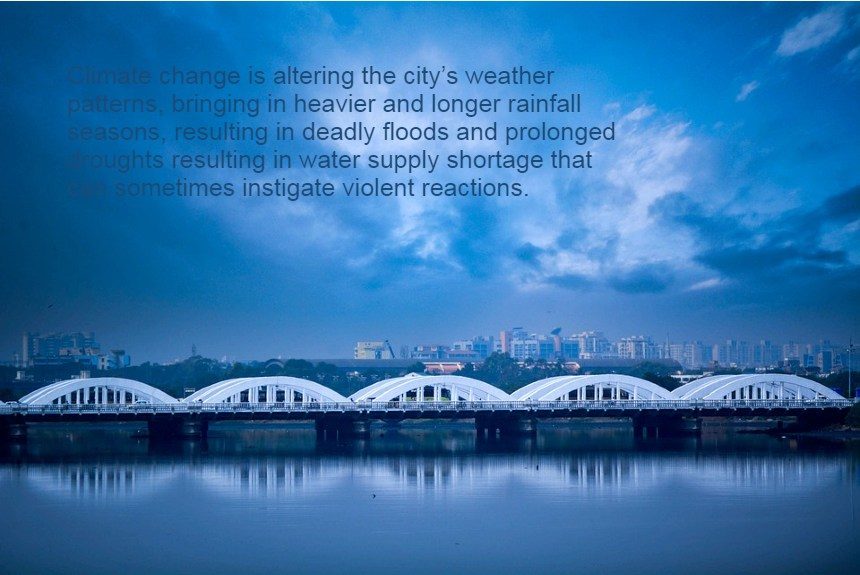Chennai’s 11 million people suffer from water scarcity caused by droughts and water supply depletion.
According to the Bloomberg article, India’s south-east coast city is a case study of what can go wrong when industrialisation, urbanisation, and extreme weather merge.
The city has twice as much rainfall a year as London and almost four times more than Los Angeles; however, in 2019, the city ran out of water, the article says. Chennai’s water scarcity is blamed on rapid urbanisation and poor urban planning.
Climate change is altering the city’s weather patterns, bringing in heavier and longer rainfall seasons, resulting in deadly floods and prolonged droughts resulting in water supply shortage that can sometimes instigate violent reactions.
To hydrate its massive population, the government deploys water trucks carrying around 10 million litres of potable water daily. Poor urban planning and uncontrolled urban sprawl caused their lakes and ponds to dissipate. The article said that between 1893 to 2017, Chennai’s water bodies shrank from 12.6 to 3.2 square kilometres.
Water bodies loss just occurred in the last decades with the construction of the city’s famous IT corridor in 2008 above 230 square kilometres of their marshland significantly contributing to it. Researchers from Chennai’s Anna University predict that industrialisation will degrade 60 per cent of the city’s groundwater by 2030.
The city’s rapid growth significantly decreases flood plains and land areas to hold precipitation and caused massive flooding.
In 2015 during its northeast monsoon season, heavy rains caused floods to reach the second floor of some buildings in its IT corridor, more than 400 people died in the area, and 1.8 million people were flooded in their homes. Four years after, the city faced its most severe water shortage causing violence to erupt in some neighbourhoods, the article says.
Climate change predictions for the region
Climate change prediction for Tamil Nadu, the state where Chennai is the capital, says that average temperatures will rise to 3C by 2100, annual rainfall will decrease by 9 per cent.
The June-September southwest monsoon precipitations that their crops depend on and refills their reserve will decline, while the winter cyclone season that typically brings floods will become more intense. These changes will mean more floods and droughts to a city already suffering from pollution, water scarcity, and congestion.
Changes in precipitation patterns observed
The northeast monsoon that usually ends in December continued through January 2021, bringing in ten times more than average. Their older population thought this is a new rain pattern.
Government action
The Tamil Nadu government passed a law in 2003 requiring all buildings to have a rain harvester to raise the water table. But continuous borehole extractions and the lack of government regulations have failed to achieve the intended outcome to replenish the water tables.
The government sought women’s participation to address the water scarcity problem through rainwater harvesting, water-saving and recycling to protect water resources, and cleaning up polluted rivers.
But until then, the government relies on the construction of large desalination plants, which are costly and suitable for arid nations or island nations with limited freshwater supply. Waste from these plants also pollutes the environment and impacts local fisheries.
New approach
The government wants to build 1,000 water tanks or similar to their ancient human-made lakes built around temples.
These lakes will have green slopes surrounding them to help absorb and filter heavy rains and restore groundwater which will be critical during dry months. But it will take at least five years for the project to make an impact on the community.
The future of Chennai
Nityanand Jayaraman, a writer and an environmentalist in Chennai, says that the problem of floods and water scarcity is caused by urbanisation and construction without thought to the environment and its limits.
Every year the city adds 250,000 people, stretching natural resources to their limits, and it is up to the government and businesses, the two most powerful agent of change, to act on the crisis.
Source:
How One of the Word’s Wettest Major Cities Ran Out of Water. (2021, February 4). How One of the World’s Wettest Major Cities Ran Out of Water. Bloomberg. Retrieved from https://www.bloomberg.com/news/features/2021-02-03/how-a-water-crisis-hit-india-s-chennai-one-of-the-world-s-wettest-cities



Leave a Reply